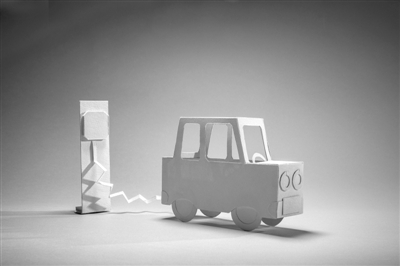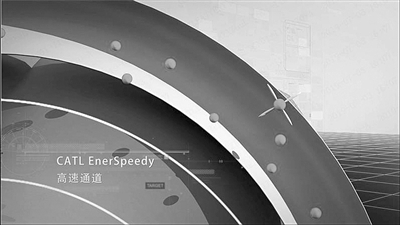After charging for 15 minutes, the electric car will get rid of the "charging anxiety" after driving for 300 kilometers.


Our reporter Cao Xiuying
"Charging anxiety" and "mileage anxiety" are a major obstacle to the large-scale industrialization of pure electric vehicles. At the 2019 World New Energy Vehicle Conference held recently, a technology called "High Specific Energy Fast Charging Lithium-ion Battery" won the Global New Energy Vehicle Innovation Technology Award.
This technology breaks through the technical bottleneck that graphite system can’t charge quickly. On the basis of maintaining the advantages of high energy density, high safety and long life, it can complete 100% charging within 15 minutes, ensuring the cruising range of electric vehicles of 300 kilometers.
What is the secret of this technology? How can we realize the fast charging of electric vehicles and make new energy users feel the convenience of "charging for five minutes and talking for two hours" like mobile phones?
At present, the fast charging methods in the industry have disadvantages.
As we all know, for pure electric vehicles, the charging and discharging performance of battery system is an important index to determine the actual use effect of vehicles. High energy density and fast charging ability are not only the technical direction that power battery manufacturers are constantly striving to develop, but also the core field of new energy technology.
"Lithium-ion batteries are also called rocking chair batteries." Cheng Xiaoyan, director of scientific research project of Contemporary Amperex Technology Co., Limited New Energy Technology Co., Ltd. (hereinafter referred to as Contemporary Amperex Technology Co., Limited), told the Science and Technology Daily reporter that the two ends of the rocking chair are the two poles of the battery, and lithium ions run back and forth at both ends of the rocking chair. When charging, lithium ions move from the positive electrode of the battery to the negative electrode through the electrolyte. Graphite, as a negative electrode, has a layered structure, and lithium ions are embedded into the graphite through the interlayer. The more lithium ions are embedded, the higher the charging capacity is.
A key index to measure the charging efficiency of electric vehicles is the charge-discharge ratio (C). The rate of charge and discharge can be simply understood as the rate of charge and discharge. The charge and discharge rate of lithium-ion battery determines how fast we can store a certain amount of energy in the battery or how fast we can release the energy in the battery. For example, when a battery with rated capacity of 100 A is discharged with 20 A, its discharge rate is 0.2C, and the used capacity is discharged within 1 hour, which is called 1C discharge; After 5 hours of discharge, it is called 0.2C discharge.
It is generally believed in the industry that fast charging of electric vehicles refers to the charging method with a charging rate greater than 1.6C, that is, the technology that takes less than 30 minutes from 0% charging to 80% charging.
As the name implies, to shorten the charging time, it is necessary to continuously improve the charging and discharging rate. The core of fast charging technology is to accelerate the speed of lithium ion moving between positive and negative electrodes through chemical system and design optimization. However, it is not enough to consider speed when developing fast charging technology.
During fast charging, lithium ions need to be instantly embedded into the negative electrode. This is a great challenge to the ability of the negative electrode to receive lithium ions quickly. In the battery of common chemical system, lithium precipitation and other by-products will appear in the negative electrode during fast charging, which will affect the cycle and stability of the battery core. Only negative electrode materials that can withstand fast charging and high current can be used to achieve fast charging.
Cheng Xiaoyan said that at present, lithium titanate and amorphous carbon are widely used as negative active materials in order to realize fast charging. However, both lithium titanate and amorphous carbon inevitably have the defects of serious shortage of energy density and high cost in practical application. The conventional design of increasing the amount of conductive materials will also affect the energy density of batteries. "In recent years, some manufacturers have begun to explore graphite as an active material, but the problem faced by graphite as a fast charging material is how to quickly release lithium electrons from the anode and then quickly enter from the cathode."
Cheng Xiaoyan explained that graphite is more like a highway. Although the energy density is higher, lithium electrons can only pass through in sequence.
In other words, graphite is not a natural material suitable for fast charging technology. "But we use technology to break through the bottleneck of the material itself, and its killer is ‘ Fast ion ring ’ And ‘ Superelectronic network ’ 。” Cheng Xiaoyan sighed.
The fast ion ring and the super-electron net accelerate the charging.
"We use graphite as the main material of the negative electrode, and innovatively use channel optimization and ‘ Fast ion ring ’ Technology, to create a circle of high-speed channels on the surface of graphite, so that lithium ions can be quickly embedded in any position of graphite, which greatly improves the embedding speed of lithium ions in the graphite cathode. Moreover, the modified graphite has the characteristics of super fast charging and high energy density, and there will be no by-products at the cathode during fast charging, which will affect the cycle and stability of the battery. " Cheng Xiaoyan said.
In addition, the technical team developed the "super-electronic net" technology to modify the cathode material, and combined with the crystal orientation and capacity excess coefficient of the anode and cathode plates to optimize the dynamic properties of the electrolyte and anode and cathode, so that the chemical system and battery design parameters can be optimally matched.
"Generally speaking, ‘ Fast ion ring ’ And ‘ Superelectronic network ’ It acts on the cathode and anode respectively, establishing a fast channel for a large number of lithium ions to flood into the cathode at the same time, and improving the diffusion rate of lithium ions. " Cheng Xiaoyan said.
In addition, in terms of mechanical parts design, the team creatively simplified the design of the battery cell top cover, set the electrode terminals to the side of the top cover plate and reduced the terminal thickness, significantly reduced the internal resistance, effectively controlled the heat value of fast charging, and ensured the reliability of fast charging while improving the energy density by more than 5%.
"Our fast charging technology has 4C— 5C fast charging capability, achieving 10-mdash; 15-minute fast charging, compared with the fast charging system of lithium titanate cathode, has obvious energy density and cost advantages, and compared with other fast charging technologies in the industry which also use graphite as cathode, it can increase by 20%— 30% charging speed, and better cycle and weather resistance. " Cheng Xiaoyan said.
It has been successfully applied to more than 5000 buses.
At present, the super lithium-iron fast-charging battery developed by Contemporary Amperex Technology Co., Limited with fast-charging graphite as the main negative material has been applied to more than 5,000 electric buses, and the buses are in good running condition, which has been well received by vehicle manufacturers and bus users, and the battery has also been rated as "the best word-of-mouth battery for new energy buses" by the Ministry of Communications.
In addition to its energy density, the battery has a great advantage. In terms of cycle life, taking buses with harsh application conditions as an example, it is fully charged and discharged about twice a day on average. Roughly speaking, it can meet the operating requirements for 8 years, and the battery needs more than 5,600 cycles. The cycle life of super lithium iron battery cells can reach 10,000 times, which not only fully meets the operating needs of electric vehicles, but also can be used for energy storage and other cascade utilization after retirement, creating more economic value.
"In order to ensure the safety and reliability of the fast charging core, we have also developed special technology to identify the ‘ of the chemical system at different temperatures and SOC states. Healthy charging interval ’ , and then in this ‘ Healthy charging interval ’ Fast charging within the range can not only achieve fast charging, but also prevent the battery from being damaged by fast charging, so as to achieve fast charging, long cycle and safety and reliability. " Cheng Xiaoyan said.
In terms of weather resistance, in order to meet the requirements of low-temperature charging in northern winter and high-temperature working conditions in southern summer, the technical team specially developed an efficient thermal management system to ensure that the battery is in a reasonable temperature range. The battery core can be heated quickly at low temperature, and the fast charging mode can be started when the temperature meets the requirements; At high temperature, the system will cool down the battery, and truly achieve "all-weather" fast charging.
"We are developing 2C— with monomer energy density greater than 160 WHr per kilogram; 2.5C fast-charging lithium iron battery with high energy density and long life (more than 6000 cycles) is expected to be mass-produced by the end of 2019. At the same time, this technology has been applied and developed to the ternary system passenger car, which has achieved 350 kilometers of battery life and completed charging within 15 minutes. " Cheng Xiaoyan said that the company also plans to be in the next 1-mdash; Within two years, the ternary power battery product with energy density as high as 255 watt-hours per kilogram will be launched, which can be quickly charged within 18 minutes.